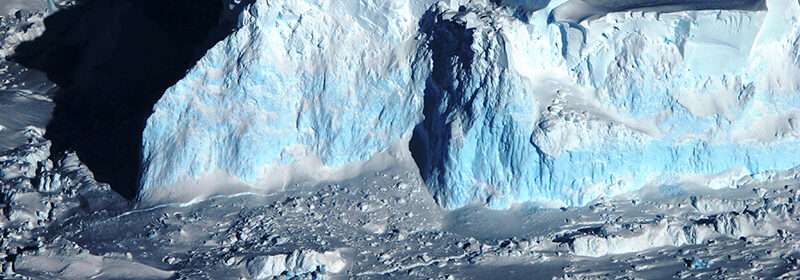Large Antarctic Glacier Cavity Found

A large Antarctic glacier cavity two-thirds the size of Manhattan has been discovered. Scientists have discovered a huge cavity at the bottom of a disintegrating glacier in Antarctica, creating concerns that the ice sheet is melting much more rapidly than expected.
The researchers found the cavity using Italian and German satellites and ice-penetrating radar from Nasa’s Operation IceBridge, which uses research aircraft to monitor changes in polar ice.
The Antarctic glacier cavity measures approximately 984 feet tall and is about 2/3 the size of Manhattan. The ice sheet has started melting faster than experts predicted. These ice sheets are a buffer between the ocean and the landlocked ice of the Antarctica continent. They prevent the ice sheets from floating out into the ocean where they will melt faster and raise the sea levels. Since the temperatures of the water in the oceans are starting to rise the warmer waters end up melting the ice sheets from beneath.
The melting ice is occurring at the Thwaites Glacier and retreating by up to 2600 feet a year. This is an alarming amount of ice melting and it may cause the demise of the Thwaites Glacier. This Antarctic glacier cavity came about by snow being compacted over time and covered about 20,000 square miles of area. When they discovered the cavity, they estimated that it may have held over 14 billion tons of ice and that it started melting about around 2015. Thwaites also supports neighboring glaciers that, if they melted, would increase sea levels by an additional 2.44 meters, threatening coastal communities worldwide.
There are already new investigations of Thwaites under way, including one by a UK team, as well as studies of other Antarctic regions.

 Print
Print